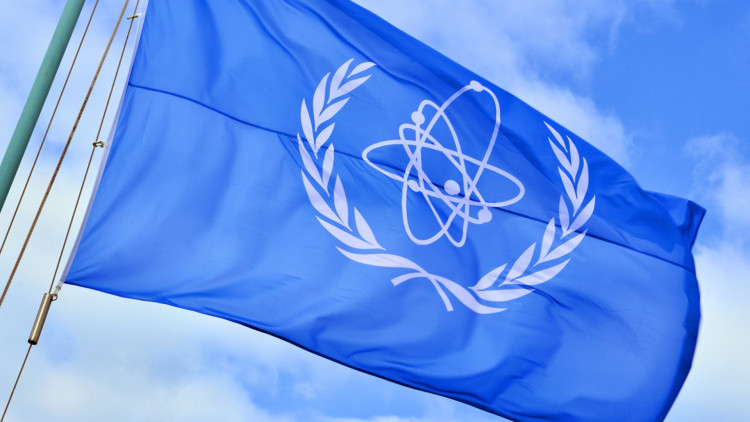The Khmelnitskiy nuclear power plant, site of Ukraine's planned new reactors. (Photo: RLuts)
Ukraine plans to start construction on four new nuclear plants this summer or fall, the country’s energy minister said in televised remarks today.
The quicker timeline aims to compensate Ukraine for lost energy capacity as its war with Russia continues. Ukraine’s government, however, still needs to sign off on the plans.
“We need vessels,” said energy minister German Galushchenko.
Khmelnytskyi nuclear power plant in Ukraine. (Photo: Wikimedia)
Explosions near the Khmelnytskyi nuclear power plant in western Ukraine early Wednesday shattered windows at the facility and temporarily cut off power to some off-site radiation monitoring stations, the International Atomic Energy Agency reported on October 25.
The Rivne nuclear power plant in western Ukraine, home to four VVER pressurized water reactors. (Photo: Victor Korniyenko/Wikipedia)
In what it is calling a “major expansion” of its efforts to prevent a severe nuclear accident befalling Ukraine, the International Atomic Energy Agency yesterday announced that it is deploying teams of nuclear security and safety experts this week to the beleaguered nation’s nuclear power plants and the Chernobyl site. (The agency has already stationed a team of experts at Ukraine’s largest nuclear facility, the six-unit Zaporizhzhia plant, which has been under Russian military occupation since last March.)
A group shot of Energoatom and Westinghouse personnel at the Khmelnytskyi nuclear power plant in Ukraine, where the first two AP1000 reactors under a recent agreement will be constructed. (Photo: Westinghouse)
The war in Ukraine notwithstanding, Westinghouse Electric Company has stepped up its partnership with Energoatom, Ukraine’s state-owned nuclear utility, signing agreements last week to supply all of the nuclear fuel for the country’s operating reactor fleet and to collaborate on the construction of nine AP1000 units for Ukraine, rather than the five earlier envisioned.
Ukraine’s president, Volodymyr Zelensky, thanks IAEA director general Rafael Mariano Grossi for the agency’s support, including its April 26 mission to Chernobyl. (Photo: IAEA)
The director general of the International Atomic Energy Agency, Rafael Mariano Grossi, led a mission to Ukraine’s Chernobyl nuclear plant this week to address ongoing radiological safety concerns at the shuttered site following five weeks (February 24–March 31) of Russian military occupation.
The New Safe Confinement structure over the damaged fourth reactor at the Chernobyl nuclear power plant. Photo from 2018.
Ukraine’s nuclear operator, Energoatom, announced yesterday that the Russian military has withdrawn from the Chernobyl plant and surrounding area. “According to the staff of the Chernobyl nuclear power plant, there are now no outsiders on-site,” Energoatom stated in an online post. Russian forces took control of Chernobyl on February 24, day one of the invasion.
In a separate post, the company said that the Russians had formally agreed to return the responsibility for Chernobyl to Ukraine. It shared a scan of a document, with the heading “Act of acceptance and transfer of protection of the Chernobyl nuclear plant,” purportedly signed by a representative of Russia’s National Guard, a representative of Rosatom, Russia’s state atomic energy corporation, and a Chernobyl plant shift manager.
Energoatom issued this graphic dismissing Russian claims of control of Zaporizhzhia as “fake” on February 28. (Image: Energoatom)
Denying a Russian claim of control of the Zaporizhzhia nuclear power plant, Energoatom earlier today declared that “Russian propaganda media reports that the invaders allegedly took control of the Zaporizhzhia NPP are a cynical fake.” According to Energoatom, all four of its nuclear power plants are under the control of Ukraine and are operating normally with enhanced defenses.
February 24, 2022, 9:48AMUpdated February 24, 2022, 3:10PMNuclear News A map of Ukraine and the nuclear sites around the country.
Russian forces invaded Ukraine today in what news sources are calling the largest military attack of one state against another on the European continent since World War II. These developing events follow an extraordinary meeting of the NATO-Ukraine Commission in Brussels on February 22, when NATO secretary general Jens Stoltenberg said that Russia’s recent actions constituted “serious escalation” of tensions in the region and that Russia had shifted from covert attempts to destabilize Ukraine to overt military action. Well before this juncture was reached, news outlets had questioned the readiness of Ukraine’s nuclear power fleet to operate safely in a country at war and ensure energy security, while Energoatom, which operates all of Ukraine’s nuclear power reactors, has issued assurances of safety and security.










